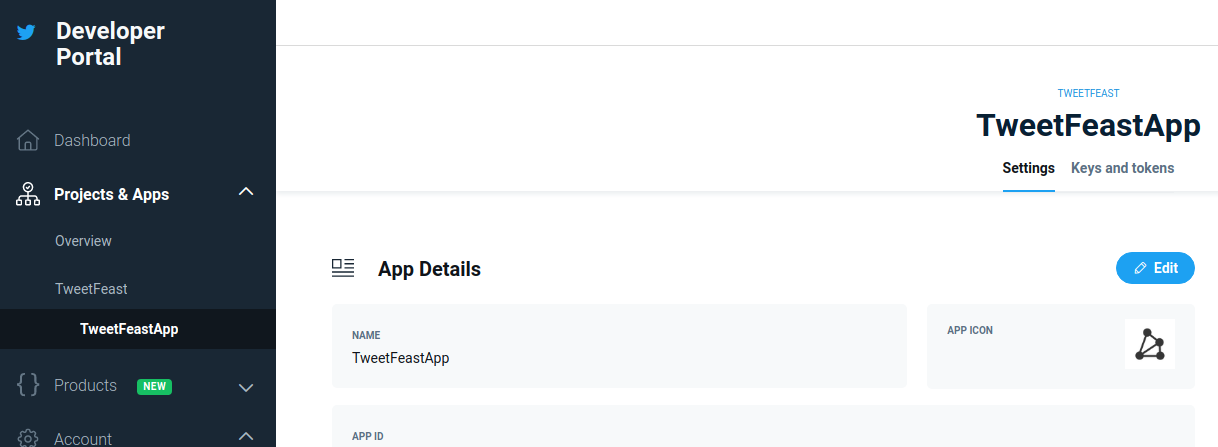Twitter Sentiment Analysis
Let's take a quick look at how you can do sentiment analysis on tweets. Whether you're doing stock prediction or trying to measure brand sentiment or something else entirely, we've got you covered. We're going to look at the steps and the libraries you'll need to do sentiment analysis in Python or Javascript.
If you don't want to write code or fiddle with API keys you can download a CSV file of tweets with sentiment analysis already included. Just sign in with Twitter to get started.

There are two main steps in doing sentiment analysis on tweets. The first step is to get the data, and the second step is to perform the sentiment analysis. To get the data you will need a developer API key from Twitter. Once you have the data you can perform sentiment analysis using a library for your language. Let's go over the details.
Contents
- Get an API key
- Step 1 (Python) Download tweets
- Step 1 (JavaScript) Download tweets
- Step 2 (Python) Twitter sentiment analysis
- Step 2 (JavaScript) Twitter sentiment analysis
Get an API key
Before you can interact with the Twitter API at all you'll need an API key. To get an API key you have to sign up for developer access and then create a project in the developer portal. Go to developer.twitter.com/en/apply-for-access to get started. Once you have developer access you can create a "project" through the portal interface.

Once you have created a project you will have the opportunity to copy or write down the API keys. Do this carefully because you will only be shown the keys once. A good place to store the keys is in a file of environment variables which you can later read from your code. Something like this:
export TWITTER_API_KEY=...
export TWITTER_API_SECRET=...
export TWITTER_API_BEARER_TOKEN=...
export TWITTER_ENVIRONMENT_NAME=...
The important key is the Bearer Token. That's the one we'll use to download tweets in the next step.
Step 1: Download tweets
Now that you have API keys sorted out you can write the code to download the tweets you want. There are different API endpoints for you to use depending on what kind of tweets you want to analyze. For the sake of simplicity we'll assume you want to download one user's timeline of tweets to perform your analysis on. If you want to get a different set of tweets, for example a search result, then you can consule the API documentation.
Now let's take a look at how to download the tweets from a users timeline in Python and JavaScript.
Download tweets with Python
We'll use the Tweepy library to download tweets by Elon Musk to perform sentiment analysis on later.
First you will want to install the tweepy library:
pip install tweepy
Here's a simple script that fetches all tweets by @elonmusk. Save it as tweets.py.
import os
import tweepy
username = "elonmusk"
c = tweepy.client.Client(bearer_token=os.environ["TWITTER_API_BEARER_TOKEN"])
u = c.get_user(username=username)
user_id = u.data["id"]
tweets = c.get_users_tweets(user_id, exclude="retweets,replies")
To see the output put print(tweets) at the end of the file and then run it like this:
TWITTER_API_BEARER_TOKEN=... python tweets.py
Great, now that you have some tweets you can do the next step; sentiment analysis.
Download tweets with JavaScript
We'll use the twitter-api-v2 library to download tweets by Elon Musk to perform sentiment analysis on later.
First you will want to install the twitter-api-v2 library:
npm install twitter-api-v2
Here's a simple script that fetches all tweets by @elonmusk. Save it as tweets.js.
const t = require("twitter-api-v2");
const username = "elonmusk";
(async function x() {
const client = new t.TwitterApi(process.env["TWITTER_API_BEARER_TOKEN"]);
const user = await client.v2.get("users/by?usernames=" + username);
const user_id = user["data"][0]["id"];
const tweets = await client.v2.get("users/" + user_id + "/tweets?exclude=retweets,replies");
})();
To see the output put console.log(tweets["data"]); at the end of the file inside the function and run it like this:
TWITTER_API_BEARER_TOKEN=... node tweets.js
Great, now that you have some tweets you can do the next step; sentiment analysis.
Step 2: Sentiment analysis
Ok now let's get to the actual sentiment analysis part. We'll look at libraries you can use for JavaScript and Python.
Twitter sentiment analysis with Python
There are two basic ways to do sentiment analysis in Python. The simplest is to use the AFINN-165 word lists. The more complicated way is to use the Naive Bayes Classifier from NLTK. Let's take a look at the simple way first.
To do the simple analysis we'll install the afinn library using pip:
pip install afinn
Now we add some simple code to our tweets.py file above to classify every tweet:
from afinn import Afinn
afinn = Afinn()
for t in tweets.data:
score = afinn.score(t["text"])
print(score, t["text"])
This will calculate a sentiment score based on the number of positive words minus the number of negative words. It will print out the score next to each tweet. If the score is zero then the tweet has a neutral sentiment. If it is greater than zero then the tweet has more positive words. If it is less than zero it has more negative words.
This is a simple way to get the sentiment of tweets that doesn't rely on any external data or additional steps. A more sophisticated way is to use a bayes classifier. This requires training a model with a set of tweets that you know are positive and negative. You can read more about doing sentiment analysis using NLTK's bayes classifier on the Digital Ocean blog.
Twitter sentiment analysis with JavaScript
We're going to ue the wink-sentiment library to do simple sentiment analysis.
The way it works is to count the number of positive words and subtract the number of negative words.
Start by installing the library:
npm install wink-sentiment
First add the code to load the wink-sentiment library at the start of tweet.js:
const sentiment = require("wink-sentiment");
Now add the code for analyzing each tweet to the tweets.js file.
Add this at the end of tweet.js inside the function.
tweets["data"].forEach(t => {
const s = sentiment(t["text"]);
console.log(s["score"], t["text"]);
});
This will calculate a sentiment score based on the number of positive words minus the number of negative words. It will print out the score next to each tweet. If the score is zero then the tweet has a neutral sentiment. If it is greater than zero then the tweet has more positive words. If it is less than zero it has more negative words.
This is a simple way to get the sentiment of tweets that doesn't rely on any external data or additional steps. A more sophisticated way is to use a bayes classifier. This requires training a model with a set of tweets that you know are positive and negative. You can use the npm package wink-naive-bayes-text-classifier to do this.
That's all folks
So that's how you do twitter sentiment analysis in Python and JavaScript.
Just a reminder that if you don't want to write code or fiddle with API keys you can download a CSV file of tweets with sentiment analysis already included. Just sign in with Twitter to get started.
Thanks for reading.